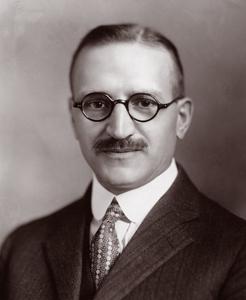
In “Whence Fact, Theory, and Path?” I was talking about what I described as “a familiar threefold distinction between evolution as fact, evolution as theory, and evolution as path.” It’s a current distinction, with its modern locus classicus T. Ryan Gregory’s “Evolution as Fact, Theory, and Path” (PDF), which appeared in the inaugural issue of Evolution: Education and Outreach in 2008. But it is also a venerable distinction, appearing as far back as the Scopes trial. Winterton Curtis, a professor of zoology at the University of Missouri, was among the scientists asked to testify for the defense in Dayton, Tennessee, and his statement included the following:
Suppose we begin with an analogy, illustrating what may be termed the fact, the course and the causes in a progressive series of events. A ship leaves a European port for the New York harbor. We may distinguish between: (1) The fact that the ship actually crossed the ocean, instead of being “created” in the harbor of New York; (2) the course the ship may have pursued, whether direct or indirect, and the like; and (3) the causes that made the ship go, whether an internal propelling force like steam or electricity, an external force like wind or current or even direction by wireless. Compared with the doctrine of evolution, we have: (1) the fact of evolution, as representing the historical series of events; (2) the course followed in evolution, for instance, whether the land vertebrates arose from the fishlike ancestors, birds from reptiles, or the like; and (3) the cause of evolution or what made and makes it happen. These three aspects, like those in the voyage of a ship, are separate though related items. They must be constantly distinguished if there is to be any clear thinking on this matter by one who is not a scientist.
Curtis didn’t claim any particular originality for the threefold distinction (and in fact was deploying it mainly to preempt misuse of William Bateson’s 1921 address “Evolutionary Faith and Modern Doubts”). Of his testimony in general, he modestly said in his contribution to D-Days at Dayton (1965), forty years after the trial, that it contained only “what might have been expected in any authoritative textbook of general zoology in use by the better colleges and universities at that time.” When I took a little time recently to look at a leading zoology textbook from the 1920s, that proved to be the case, at least as far as the threefold distinction is concerned.
The textbook is Principles of Animal Biology (1920), by A. Franklin Shull (above: 1881–1961) of the University of Michigan. (George R. Larue and Alexander G. Ruthven of the same university are listed as collaborators on the title page, but I’ll refer to the author as Shull for the sake of brevity.) Chapter 16 of the textbook addresses evolution, and several pages in, while discussing the reception of evolution, Shull writes, “Occasionally even now there is a cry that evolution is being abandoned by scientific men, but the arguments in support of such a statement are usually found to confuse the fact of evolution with the cause or method of evolution” (emphasis in original). He adds, in the same paragraph, “[S]ome one may proclaim that the doctrine of evolution has been relegated to history. Nothing is farther from the truth. It is only the theories that would account for evolution, or theories that concern the course which evolution has taken, that are still the subject of controversy.” That was accurate in 1920, and it’s accurate ninety-five years later.
Shull then reviews the evidence for evolution, citing experimental work as well as the explanatory power of evolution in comparative anatomy, comparative embryology, comparative physiology, paleontology, and biogeography. Then he turns to the causes of evolution, emphasizing, “While no thinking person now denies the fact of evolution, there is still much disagreement regarding the causes or method of the process,” and then to the course of evolution, contending, “Just as there has been confusion in the minds of writers and observers between the fact of evolution and the cause of evolution so has there been confusion between the cause of evolution and its course.” (To my mind, Shull himself foments the latter confusion, since he distinguishes two questions about the course of evolution—“what course has evolution taken?” and “what directed evolution in that course?”—where the latter is a question about causes.) Anyhow, Shull’s textbook only pushes the distinction back by five years. Is it possible to do better? That’s a question for part 2.

